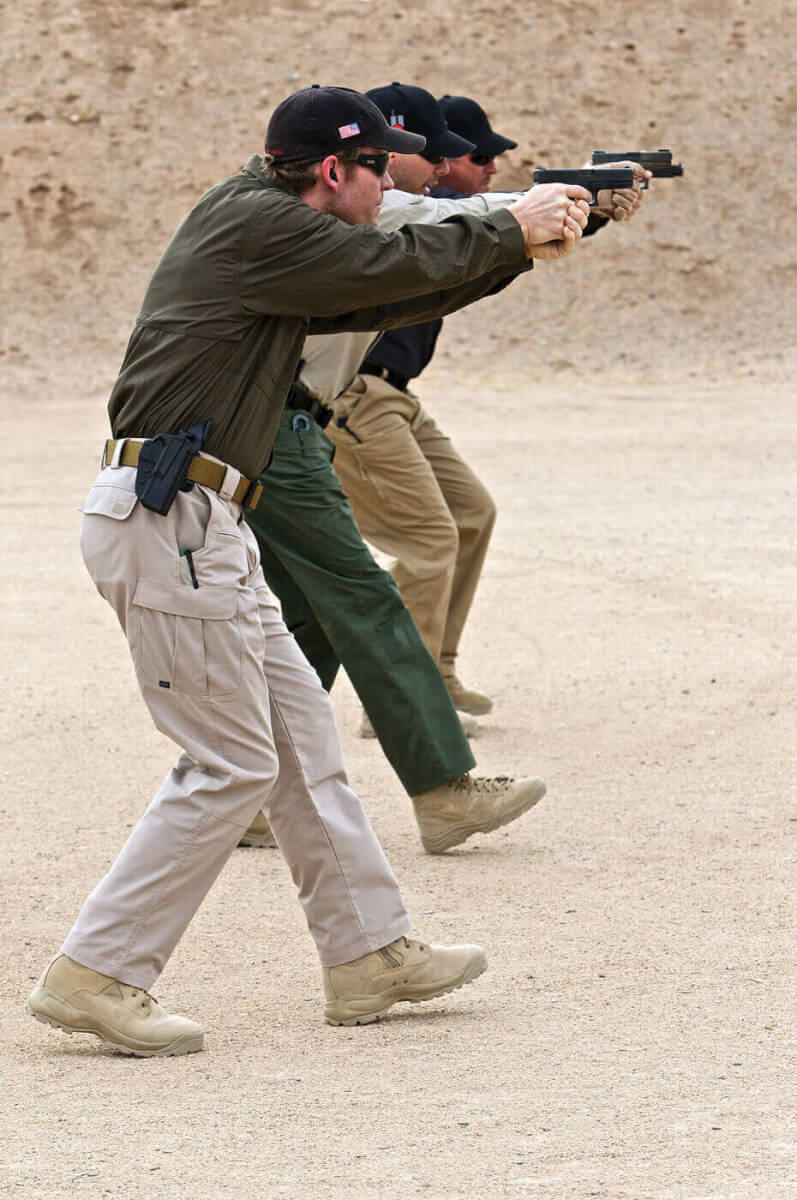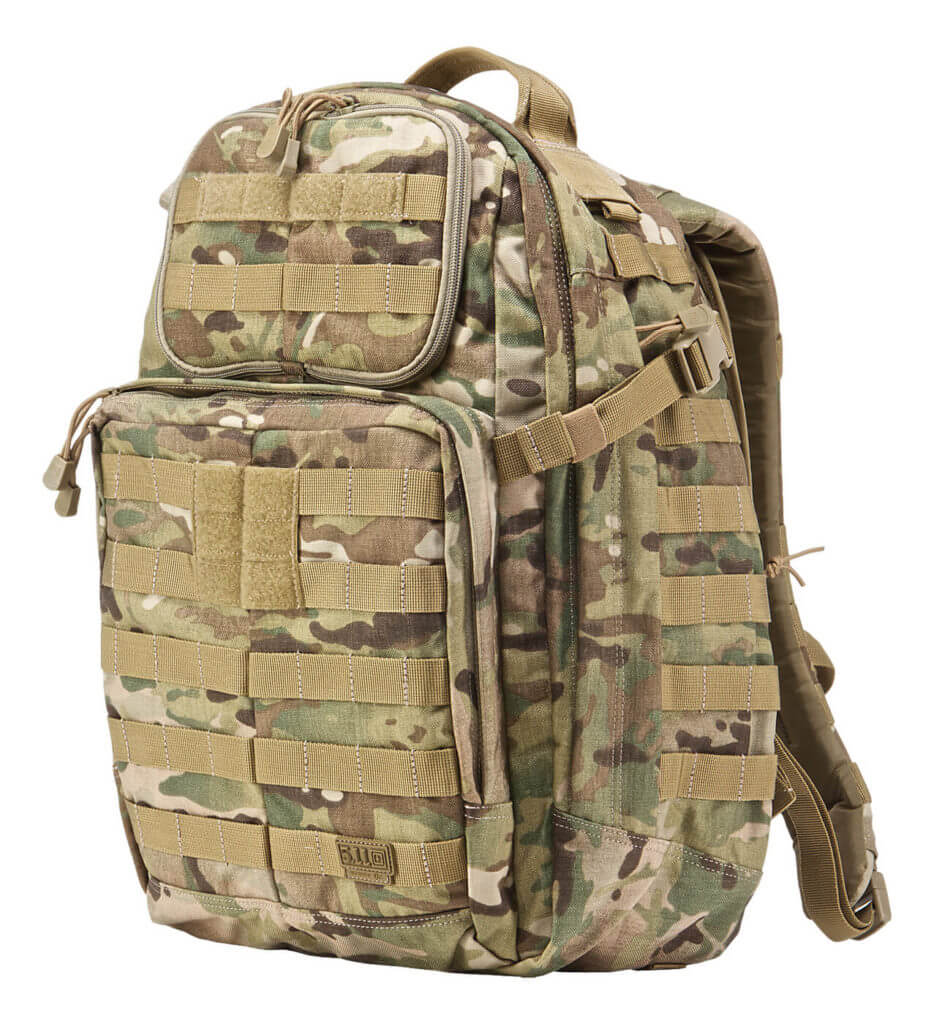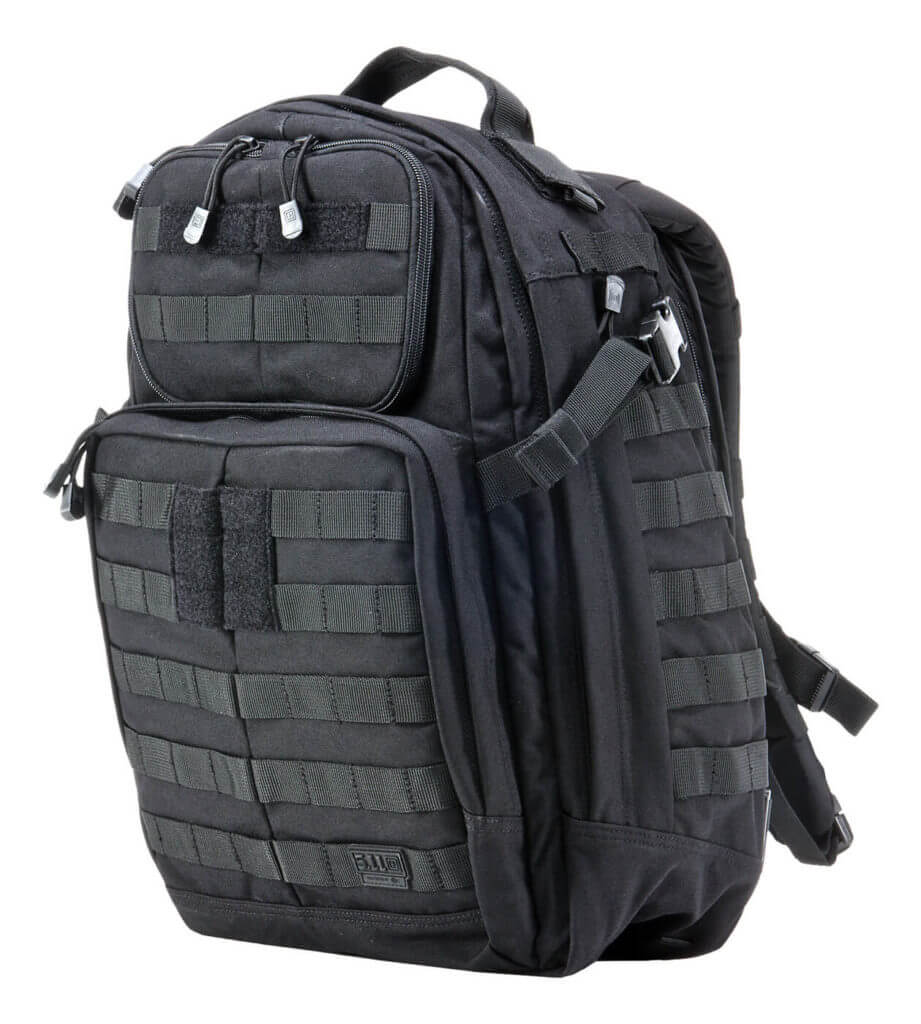ASG geared-up survival expert Tony Nester in the latest from 5.11 Tactical. Find out what features worked best during his rigorous desert survival training.
 These are probably the most comfortable and durable pants I’ve worn afield, and I’m amazed at their well-thought-out design, with numerous cargo pockets, seven belt loops, and 5.11’s patented ripstop fabric material.
These are probably the most comfortable and durable pants I’ve worn afield, and I’m amazed at their well-thought-out design, with numerous cargo pockets, seven belt loops, and 5.11’s patented ripstop fabric material.
After three days of beating these up on a desert survival course where we were plowing through knee-high thickets, they held up extremely well and only showed minimal signs of abrasion.
$69.99
 This is a polyester shirt that comes in both long- and short-sleeved versions. It has several integrated vents that run from the armpit to the bottom of the shirt.
This is a polyester shirt that comes in both long- and short-sleeved versions. It has several integrated vents that run from the armpit to the bottom of the shirt.
I’ve always found polyester fabrics to be mildly uncomfortable in the triple-digit heat of the desert, though acceptable in normal summer temperatures, and that was my experience with the 5.11 Traverse shirt, this despite the venting and moisture-wicking fabric. I prefer poly-cotton or nylon-cotton blends given how straight polyester can irritate the skin of some people (myself included).
That said, the design is solid and I like the two zipper-secured pockets on either side. The shirt provides SPF 50 sun protection.
$69.99-$74.99
 The rocky and cactus-strewn terrain of the desert demands rugged footwear and the XPRT boots did not disappoint.
The rocky and cactus-strewn terrain of the desert demands rugged footwear and the XPRT boots did not disappoint.
These were pretty stiff out of the box and I was concerned there would be a long breakin time, but the fit started to “relax” after a weekend trip and are now very comfortable.
The material, comprised of Nubuc-Suede with leather overlays, is above average for a desert boot. This alone makes it stand out from the myriad knockoffs on the market today and should add considerably to the boot’s longevity. The factory insole was a little thin for my tastes and I replaced it with a pair of Superfeet soles, which add more cushioning for walking on rocky surfaces.
Being a full-time guide, I tend to go through a pair of boots about every eight months, and I envision the XPRT holding up well beyond that timeframe given their current performance. All in all, a lightweight, durable design for arid regions.
$194.99
 The LMC Recurve is a plain edge folder with a 3.25-inch hollow ground blade. The blade is easy to deploy with one hand and comes with a liner-lock mechanism. The grip offers the option of a reversible clip to accommodate right- and left-handed users. It measures 4.25 inches closed and 7.5 inches open with a satin finish on the blade, which is crafted from 3mm thick AUS 8 steel hardened to 57-60 HRC.
The LMC Recurve is a plain edge folder with a 3.25-inch hollow ground blade. The blade is easy to deploy with one hand and comes with a liner-lock mechanism. The grip offers the option of a reversible clip to accommodate right- and left-handed users. It measures 4.25 inches closed and 7.5 inches open with a satin finish on the blade, which is crafted from 3mm thick AUS 8 steel hardened to 57-60 HRC.
The thing that most impressed me was the comfortable finger choil, a feature not often found in folding knives. This provides better control when carving while increasing the safety factor. I used the blade numerous times for creating wood shavings from a resinous log for firestarting along with general camp chores, and it shined through.
Ideal for everyday carry and utilitarian functions, the LMC is a reliable cutting tool in the competitive world of folding blades.
$47.99
As with other items in the 5.11 line, this pack is made of quality material and has a spacious design. With my height of 6 feet, I found the neck yoke and shoulder strap width fine, but I would like to see thicker padding in the latter.
The pack comes with a wrap-around web platform that is MOLLE-compatible and provided ample room to attach my survival kit and a small medical pouch on the front panel. The company calls this a 2,000 cubic inch (33 liter) pack, but that’s only the main compartment; the multiple side and front pockets greatly increase the carrying capacity. The RUSH24 is more space than one needs for a day-hike, but ideal for two- to three-day treks or as a bugout bag. I know mine will be seeing a lot of use.
$130.99
Editor’s note: A version of this article first appeared in the November 2014 print issue of American Survival Guide.




